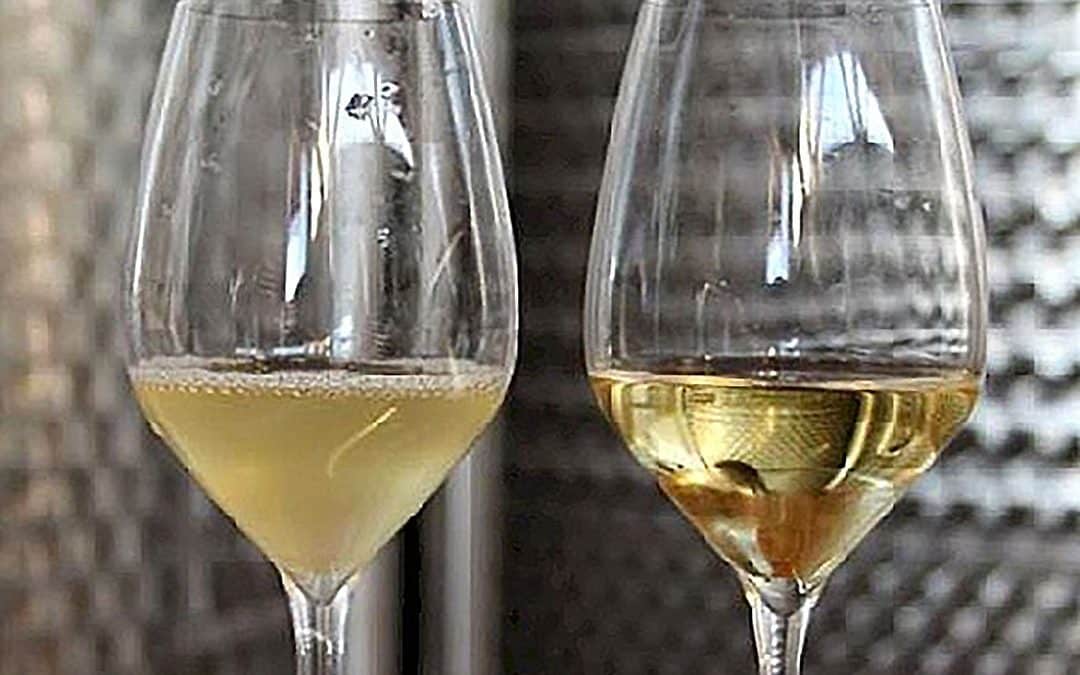Cellar practices are a fundamental step in the production of wine in order to improve its stability and organoleptic qualities. In this article we will delve into the wine clarification and I will try to answer a few questions. In particular, I would like to analyse two clarification materials: l'albumin and the jelly.
What is clarification for?
Clarification serves to prevent precipitation, disease and cloudiness of the wine.
When to clarify wine?
Clarification is done to obtain a clearer, brighter and more transparent wine.
What does clarification mean?
Clarification means stabilising the wine by removing the sediments that make it cloudy.
How do you clarify?
Clarification is a practice carried out at low temperature that consists of adding substances that form heavy aggregates with the particles to be removed, which then settle at the bottom of the container. The substances added may be organic (animal gelatine, vegetable gelatine, albumin, isinglass) or inorganic (aluminium sulphate, bentonite, potassium caseinate, etc.) or a combination of these.
Wine clarification: albumin or gelatine?
The choice of clarification material must be made according to the desired result, the characteristics of the wines to be treated and the technological constraints.
Albumina
Widely used with the best quality wines for its ability to eliminate astringency and bitterness in red wine. It also refines the structure, corrects any oxidised hints and respects the typicality of the grape varieties used and the wine obtained from them. Commercially, it is a powder to be rehydrated with cold water because it is sensitive to heat. Another property of albumin is the low reduction of polyphenols even at high doses compared to bentonite. However, dosages are very limited compared to the other methods. Today, powdered albumin of excellent quality is used; historically, cellarers used an egg white with a pinch of sodium chloride.
Jelly
The value of the action performed by gelatine in the clarification process is directly proportional to its surface charge. The higher the surface charge of gelatine, the broader its range of action. This means that gelatine acts on all 'classes' of tannins by refining their properties and maintaining their balance. The lower the surface charge of gelatine, the lower its spectrum of action. This means that gelatine only acts on the most reactive and aggressive tannins and therefore also plays a balancing role for disharmonised wines. From this we can see that a gelatine with a high surface charge is useful in old, structured wines, while a gelatine with a low surface charge is perfect for young, astringent wines.
Animal gelatine
For years it was the most widely used material for clarification, only to be 'feared' during the mad cow years. Currently, pig skin is mainly used to obtain it. It is presented commercially as a thin transparent sheet that is more or less pure. It is used like isinglass to make cakes: it is left to soak in cold water to swell and soften, then dissolved in a lukewarm liquid, mostly water.
Vegetable gelatine
Obtained from peas, it is even less used than animal gelatine. Its action and mode of use are similar to animal gelatine, with the difference that the resulting wines are softer because it binds to the more astringent tannins and produces less lees.
Another interesting clarification material are the oenological tanninsbut these deserve a separate discussion. In the meantime, I also recommend reading this article on sulphur dioxide.
Cheers 🍷
Chiara


